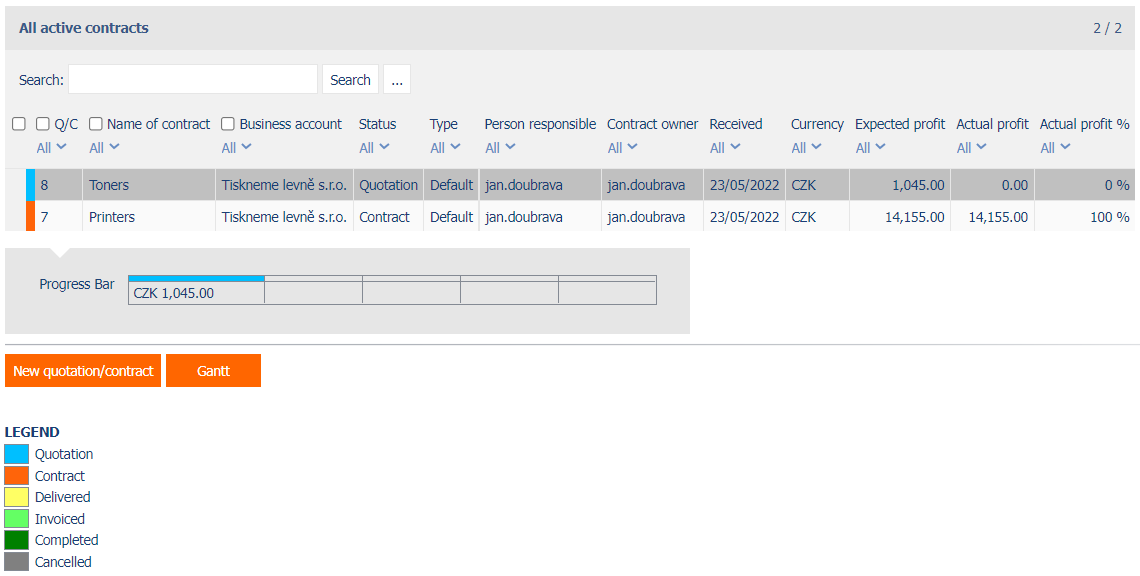Business quotations consist of individual items – products from a catalog, stock items or general items without a link to a catalog or inventory. For the purpose of providing quantity discounts, each item can contain up to three price variants depending on the quantity offered. Each of the quotation items can have a set sales price type, which determines the amount of margin, etc. In addition, a single discount of a specified percentage can be applied to each of the three price variants.
After the customer approves the quotation, we simply copy the items in the selected price variant into the contract items. This makes the quotation a contract. Of course, we can now add more items to the contract at any time in the future. An important concept for each contract item is its current balance. This indicates whether the contract item has already been invoiced to the customer and in what amount. So we simply have an overview of how the individual items of the contract cost, what the resulting receivables are and how much is still necessary to invoice within the given contract.
The contract is the point where most of the agendas of the information system collide. In one place we have information about all documents that relate to the contract – business documentation, activities, quotation, acceptance reports, complaints, tasks, accounting documents, time sheets, etc.

